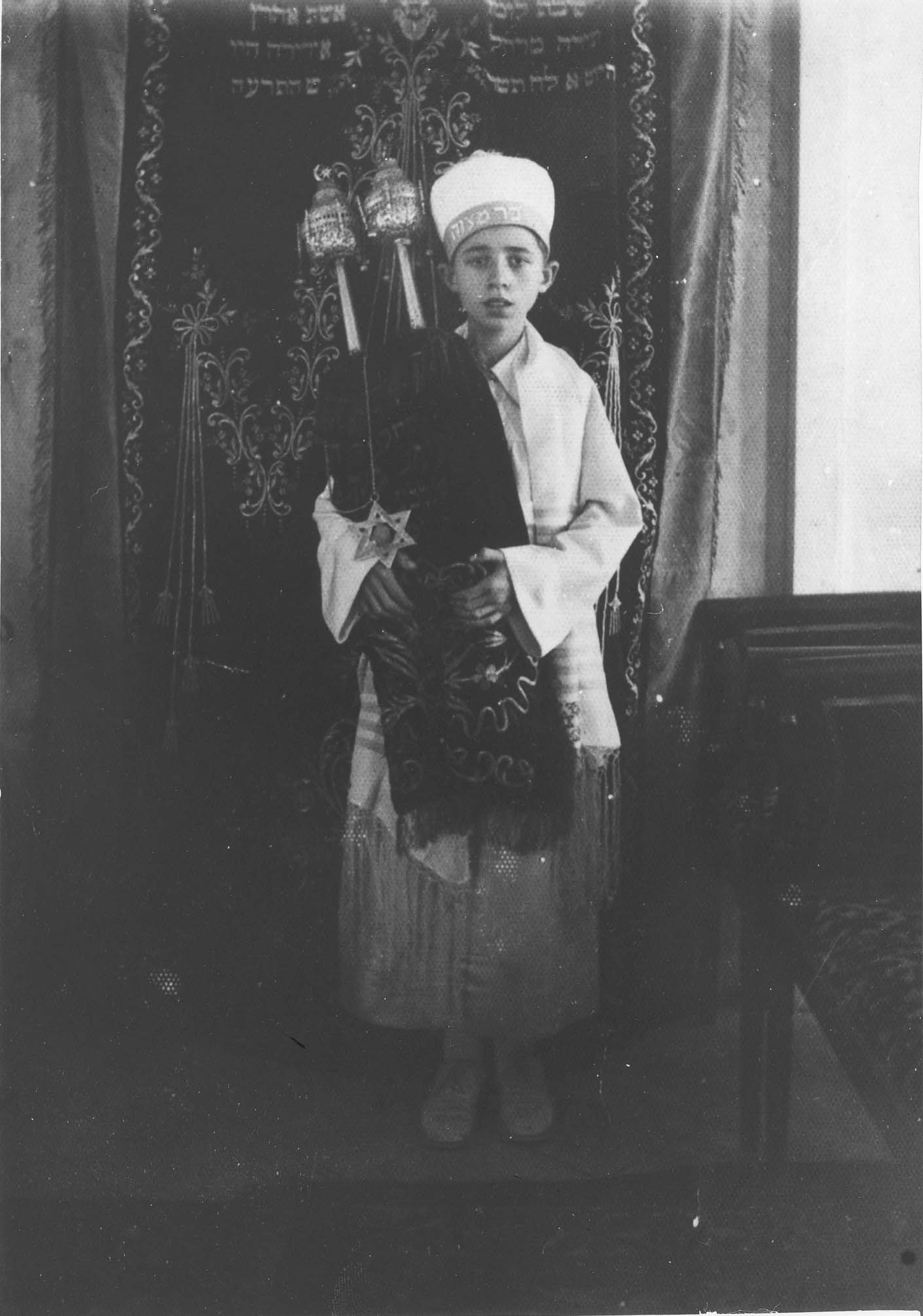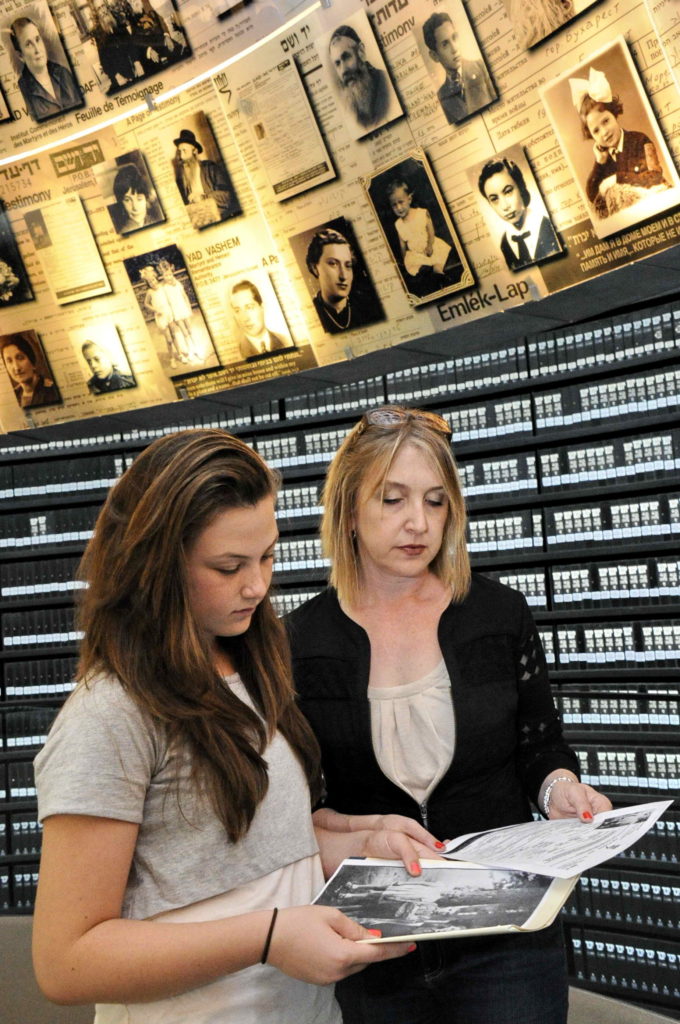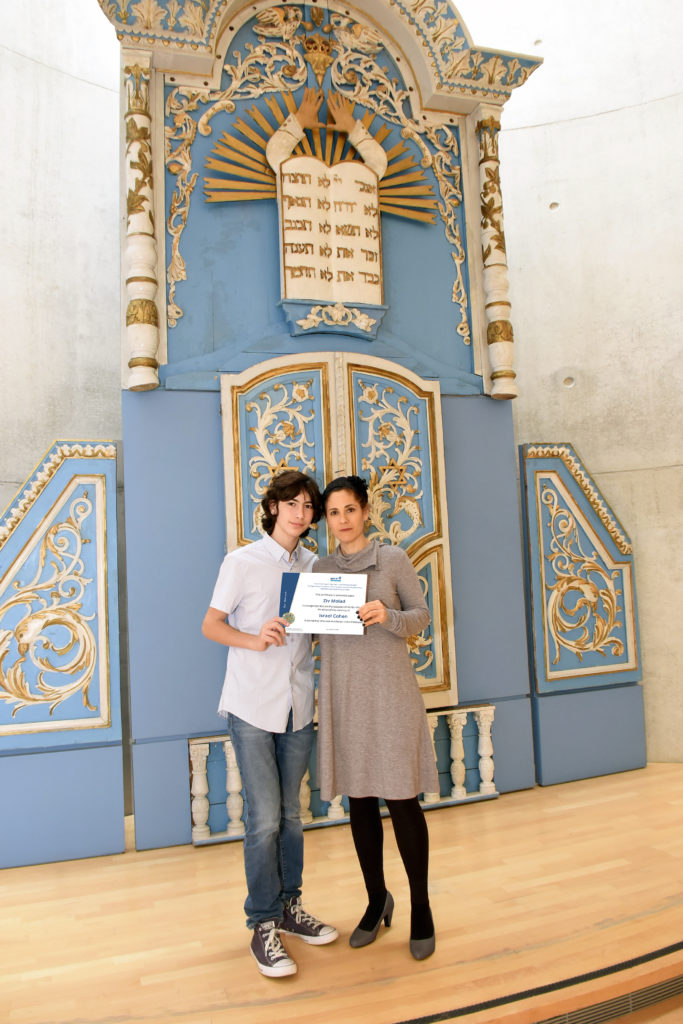
Moshe Porat remembers how one day in June 1944 his uncle woke him up in the middle of the night telling him “Moshele, do you realize that today is your Bar Mitzvah? Wake up quickly.” Through the sleeping bodies that were scattered on the floor, they trekked an hour or so to a hidden place where 10 men gathered with a Torah scroll and that is how he celebrated the special life cycle event in Jewish tradition, the day of becoming a man.
Moshe was born in 1931 in Hajdúnánás in southeastern Hungary to Jozsef Levy and Gizella-Naomi – an observant Hasidic family of seven. In March 1944, the Germans occupied Hungary. By the end of May, a ghetto was established in the city. The men were sent to forced labor, and the community was left with only women, children and the elderly.
On 17 June, the ghetto’s inhabitants were deported in cattle cars to Debrecen, where they were concentrated in a brick factory. It was there that Moshe observed his Bar Mitzvah on 21 June 1944: “I took my new set of tefillin (phylacteries), which my father had given me during his last leave, out of my backpack. I concealed them in my shirt and my uncle led me to a hidden nook where I read from the Torah.”
Moshe survived the Holocaust and later immigrated to Israel, where he had four daughters, 15 grandchildren and 11 great-grandchildren. But many Jewish children from Europe and North Africa were not as fortunate. Of the nearly 1.5 million Jewish children murdered during the Holocaust many never had the opportunity to reach the age of Bar or Bat Mitzvah.

A bar or bat mitzvah signifies the moment a child accepts his place as a Jewish individual and takes his or her part in the fabric of the Jewish people. In honor of this milestone, Yad Vashem offers a special Twinning Program as a unique way to mark this special occasion. The program connects a Bar/Bat Mitzvah boy or girl to their past by bonding them with the memory of an individual child who was murdered during the Holocaust. The boy or girl being remembered will share something with the child celebrating – a birthday, a name or place of origin.
Recently, Yad Vashem has expanded this project to include youth from all over the world who are celebrating this special occasion in their hometown. Hallie Kopel, a Bat Mitzvah girl who twinned with a Shoah victim as part of her Bat Mitzvah Ceremony said, “it is important to know where you’re from, so that you know where you are going.”

Families who have marked this occasion at Yad Vashem describe it as the “highlight of their visit to Israel.” Following the twinning ceremony of her son Caleb at Yad Vashem, Debra Rinn reflected: “It was very special for us to have the opportunity to share our son’s Bar Mitzvah with the memory of a boy who was murdered in the Holocaust.”
As time passes, remembering those who were murdered in the Holocaust as individuals and not just a number becomes more important. We must engage the next generation to continue carrying the memory forward. Yad Vashem’s goal is to infuse a sense of pride in our shared heritage through a myriad of remembrance and educational activities in order to strengthen Jewish continuity and to create memory with meaning for future generation. The Twinning Program helps ensure that youth today remain connected to our shared past and gives us an opportunity to honor those murdered during the Holocaust.
For additional information visit Yad Vashem’s website



